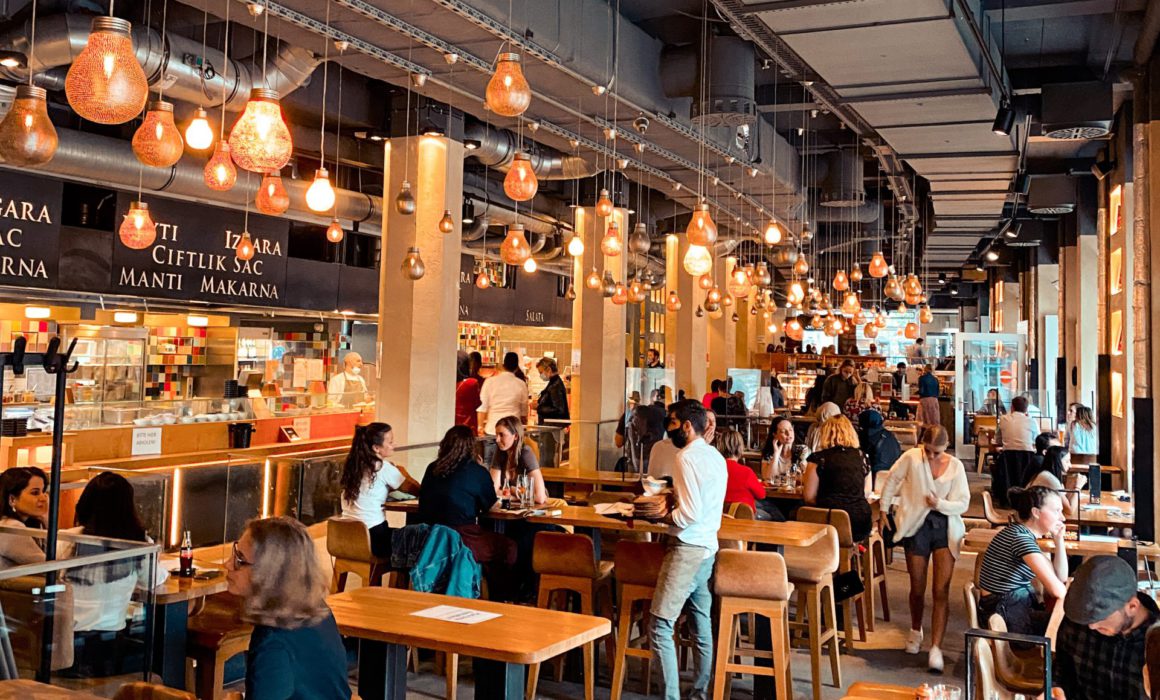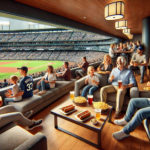It had been nearly two decades since I walked into a University cafeteria, and I knew it would be different, but I didn’t expect how different it would be. Instead of serving sandwiches, pizzas and chicken strips, University cafeterias now serve food better than what my mom cooked at home (sorry mom!). From culinary delights from around the world, to gluten-free, vegan and dairy-free options, students now have access to food that will meet their dietary needs, and that taste great! Looking around the cafeteria, the bright windows showcased a variety of seating options for students to enjoy their food, work alone or meet with a group. It’s a far cry from the sandwich shop in the University Student Center basement that I was used to.
Naturally, a lot has changed in two decades, including the consumer’s expectation. Whether it’s a University cafeteria, an office food hall or the bistro in the hospital, food service companies have their work cut out for them to not only meet the food needs of their consumers, but the expectations of the entire experience from ordering to payment.
In a world where technology is seamlessly integrating into our daily lives, the way we approach dining experiences is no exception. Traditional cafeteria setups are undergoing a digital transformation, and mobile ordering is at the forefront of this revolution. This innovative approach is reshaping how we order and enjoy our meals in cafeterias, offering convenience, efficiency, and a touch of modernity. In this blog post, we’ll delve into the benefits and the evolving landscape of mobile ordering in cafeterias, exploring how this technology is enhancing the overall dining experience for both patrons and cafeteria operators.

Convenience Redefined
The cornerstone of mobile ordering in cafeterias is its unparalleled convenience. With just a few taps on a smartphone, patrons can browse menus, customize orders, and make payments – all from the comfort of their seat or even before arriving at the cafeteria. This eliminates the need to wait in long lines or shuffle through crowded spaces during peak hours. The time saved not only enhances the overall dining experience but also allows cafeteria-goers to make the most of their lunch break.
Imagine being able to place an order while commuting to the cafeteria and having it ready for pickup upon arrival. Mobile ordering streamlines the process, allowing individuals to optimize their time and avoid the stress associated with traditional ordering methods. Using technology, you can take it one step further by being able to order your coffee at the cafe, your sushi at the stand and your dessert at the ice cream bar, all on the same transaction. This takes the hassle out of having to place three orders in three different places in the cafeteria to get what you want.
The convenience of mobile ordering drives more orders to the business. A lot of people in office or taking classes opt not to buy their lunch at the cafeteria because they don’t think they have enough time to order, pick up and eat during their break. By scheduling your order and picking it up at a specific time, it provides comfort to the consumer and empowers them to order food when they may have otherwise not.
Efficiency for Cafeteria Operators
The advantages of mobile ordering aren’t limited to patrons; cafeteria operators also reap the benefits. By implementing a robust mobile ordering system, operators can optimize their workflows, reduce congestion at peak hours, and enhance staff efficiency. The system can be integrated with other technologies being used allowing operators to better report on daily activities and create efficiencies using data.
Moreover, mobile ordering facilitates a smoother transaction process. Since payments are made electronically, there is less reliance on cash transactions, reducing the likelihood of errors and enhancing financial tracking. The automated nature of the system also allows for easy tracking of popular menu items, enabling operators to adapt and optimize their offerings based on customer preferences.
Personalization and Customization
Mobile ordering platforms empower patrons with the ability to customize their orders to their liking. Whether it’s dietary restrictions, preferences, or specific requests, users can easily communicate their needs through their device. This level of personalization not only enhances the dining experience but also ensures that individuals with dietary restrictions or allergies can confidently make choices that align with their needs.
Cafeterias can use information gathered from mobile orders to analyze customer preferences and trends. This can be invaluable in refining menus, introducing new items, and tailoring offerings to better suit the tastes of their clientele. The result is a more customer-centric approach to dining, fostering loyalty and satisfaction.
Contactless Transactions in a Post-Pandemic World
The global COVID-19 pandemic has accelerated the adoption of contactless technologies across various industries, and cafeterias are no exception. Mobile ordering provides a safer and more hygienic alternative to traditional ordering methods, reducing physical contact between patrons and cafeteria staff.
The ability to place orders, make payments, and receive notifications through a mobile device minimizes the need for physical interaction, making the entire dining process more secure. This contactless approach not only aligns with current health and safety concerns but also sets the stage for a more hygienic and efficient future in cafeteria operations.
Streamlined Loyalty Programs and Promotions
Mobile ordering platforms often come integrated with loyalty programs and promotional features. Cafeterias can leverage these tools to reward loyal customers, offering discounts, special deals and menus, or loyalty points for every mobile order placed. This not only incentivizes repeat business but also encourages patrons to explore new menu items or seasonal offerings. In an office setting, this can allow for special discount codes or menus for employees.
The real-time nature of mobile ordering data allows cafeteria operators to track the success of promotions and adjust strategies accordingly. This agility in adapting to customer preferences ensures that loyalty programs remain effective and engaging over time.
Enhanced Analytics for Continuous Improvement
One of the often-overlooked advantages of mobile ordering is the wealth of data it generates. Cafeterias can access valuable insights into customer behavior, popular menu items, peak ordering times, and much more. This data-driven approach allows operators to make informed decisions, refine operations, and continuously improve the overall dining experience.

Conclusion
As cafeterias embrace the era of digitalization, mobile ordering stands out as a transformative force, reshaping the way we dine. The convenience it offers to patrons, the operational efficiency it brings to cafeteria operators, and the overall enhancement of the dining experience make mobile ordering a crucial component of the modern cafeteria ecosystem.
As we look toward the future, it’s evident that the integration of technology will continue to play a pivotal role in shaping the way we interact with food service establishments. Mobile ordering is not just a trend; it’s a powerful tool that fosters efficiency, personalization, and safety. Embracing this technology is not just about keeping up with the times; it’s about creating a dining experience that aligns with the expectations and preferences of today’s dynamic and tech-savvy consumers.



